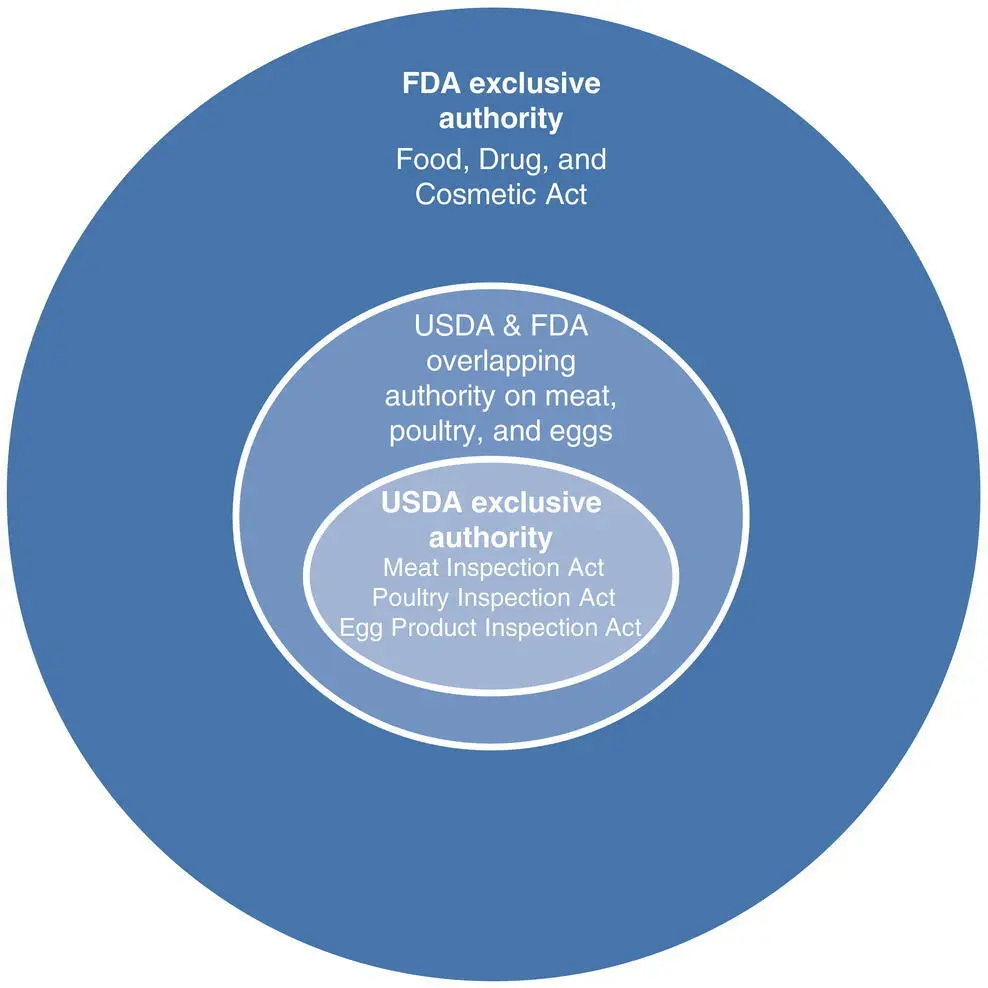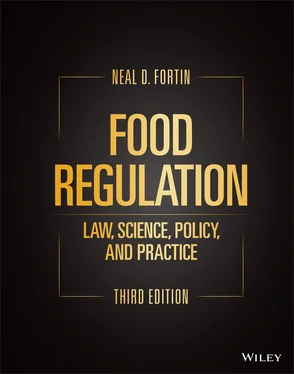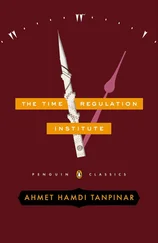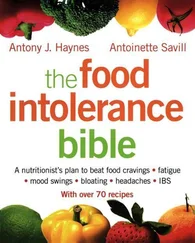Neal D. Fortin - Food Regulation
Здесь есть возможность читать онлайн «Neal D. Fortin - Food Regulation» — ознакомительный отрывок электронной книги совершенно бесплатно, а после прочтения отрывка купить полную версию. В некоторых случаях можно слушать аудио, скачать через торрент в формате fb2 и присутствует краткое содержание. Жанр: unrecognised, на английском языке. Описание произведения, (предисловие) а так же отзывы посетителей доступны на портале библиотеки ЛибКат.
- Название:Food Regulation
- Автор:
- Жанр:
- Год:неизвестен
- ISBN:нет данных
- Рейтинг книги:4 / 5. Голосов: 1
-
Избранное:Добавить в избранное
- Отзывы:
-
Ваша оценка:
- 80
- 1
- 2
- 3
- 4
- 5
Food Regulation: краткое содержание, описание и аннотация
Предлагаем к чтению аннотацию, описание, краткое содержание или предисловие (зависит от того, что написал сам автор книги «Food Regulation»). Если вы не нашли необходимую информацию о книге — напишите в комментариях, мы постараемся отыскать её.
Food Regulation: Law, Science, Policy, and Practice
Food Regulation: Law, Science, Policy, and Practice, Third Edition,
Food Regulation — читать онлайн ознакомительный отрывок
Ниже представлен текст книги, разбитый по страницам. Система сохранения места последней прочитанной страницы, позволяет с удобством читать онлайн бесплатно книгу «Food Regulation», без необходимости каждый раз заново искать на чём Вы остановились. Поставьте закладку, и сможете в любой момент перейти на страницу, на которой закончили чтение.
Интервал:
Закладка:
This federal delegation and organization of responsibilities is somewhat a haphazard patchwork. Just as the statutes were written to address specific problems at particular points in history, the delegation of food regulation was developed to address specific concerns. The delegation, therefore, represents an evolution rather than an organization by design.
A number of authors have called for an end to this patchwork system by creation of a unified food safety agency with paramount responsibility for the safety of the U.S. food supply. 51 Similarly, when large outbreaks of foodborne illnesses become public concerns, attention focuses on the organization of food safety regulation.
1.5.10 State and Local Governments
Allocation of resources is an additional reason state and local governments play a prominent role in food safety regulation in the United States. The combined food‐related budget of the above‐mentioned federal agencies amounts to only a small fraction of the total federal government budget. The combined total of state and local officials far outnumbers the federal food regulatory staff.
State and local governments employ food inspectors, sanitarians, microbiologists, epidemiologists, food scientists, and more. Their precise duties are dictated by state and local laws. Some of these officials monitor only one kind of food, such as milk or seafood. Many work within a specified geographical area, such as a county or a city. Others regulate only one type of food establishment, such as restaurants or meat‐packing plants.
State meat and poultry inspection programs must be assessed by the USDA FSIS to determine whether the state inspection programs are at least equal to the federal program. FSIS assumes responsibility for inspection in a state that chooses to end its inspection program or cannot maintain the equivalent standard.
QUESTION
1 1.6 A Single Food Safety Agency. The present U.S. food safety system is a patchwork of a dozen different federal agencies. In 1998, the National Academy of Sciences urged Congress to establish a “unified, central framework for managing food safety programs” headed by a single individual. What are some of the pros and cons of creating a single federal food safety agency?
1.6 MAJOR FEDERAL LAWS
1.6.1 The Main Statutes
All statutes in force in the United States are codified in the United States Code (U.S.C.). The U.S.C. is organized into subject matter titles with numbering that is unique from the section numbering in the statutes as they were enacted into the public acts. For example, section 1of the FD&C Act is codified as 21 U.S.C. § 301. Thus, this section may be cited with one or the other or both reference numbers, such as “Sec. 1. [301].”
Food, Drug, and Cosmetic Act (FD&C Act)
The Federal FD&C Act of 1938 gives FDA authority over cosmetics and medical devices as well as food and drugs. The 1938 Act was adopted to correct the imperfections of the 1906 Act and to respond to change in technology and in societal demands from consumers who demanded ever‐increasing information about food products. In particular, the 1938 Act enacted a comprehensive set of standards by which food safety could be regulated.
Further amendments and revisions to the act after 1938 extended the coverage of the FD&C Act or enlarged FDA’s authority over certain products. However, a few amendments have narrowed FDA’s authority.
Many states have adopted the Uniform State Food, Drug, and Cosmetics Bill recommended by the AFDO, which bears many similarities to the federal FD&C Act. Adoption of this model law is voluntary, but most states have primary food laws that are largely the same as the federal law.

FIGURE 1.2 Overlapping statutory authority.
Federal Meat Inspection Act (FMIA)
The FMIA of 1906 was substantially amended by the Wholesome Meat Act of 1967. 52 The FMIA requires USDA to inspect all cattle, sheep, swine, goats, and horses when slaughtered and processed into products for human consumption. The primary goals of the law are to prevent adulterated or misbranded livestock and products from being sold as food, and to ensure that meat and meat products are slaughtered and processed under sanitary conditions.
These requirements apply to animals and their products produced and sold within states as well as to imports, which must be inspected under equivalent foreign standards. The FDA is responsible for all meats considered “exotic,” including venison and buffalo (see Figure 1.2). The FDA also has food safety authority under the FD&C Act for pre‐slaughter animals, feed ingredients, animal drugs, transport of packaged meats, and retail sales.
Poultry Products Inspection Act (PPIA)
PPIA provides for the inspection of poultry and poultry products and regulates the processing and distribution poultry to prevent the movement or sale of poultry products that are adulterated or misbranded.
Egg Products Inspection Act (EPIA)
EPIA provides for the inspection of certain egg products, restrictions on the certain qualities of eggs, and uniform standards for eggs. EPIA otherwise regulates the processing and distribution of eggs and egg products.
1.6.2 Other Statutes
The FD&C Act has been amended over 100 times. Usually the amending statute is no longer named and reference is made to the FD&C Act directly. For instance, the FSMA may not be mentioned but rather the amended powers added into the FD&C Act will be referenced.
A few significant statutes in the food laws of the United States that are notable include the following.
The Food Additive Amendment of 1958
The Food Additive Amendment requires manufacturers of new food additives to establish safety before use in food. The Delaney clause prohibits the approval of any food additive shown to induce cancer in humans or other animals.
The Color Additive Amendment of 1960
The Color Additive Amendment requires manufacturers to establish the safety of color additives in foods, drugs, and cosmetics. The Color Additive Amendments is more stringent than the law for other additives and includes its own Delaney clause.
Food Quality Protection Act (FQPA) in 1996
The FQPA amended prior pesticide legislation to establish a more consistent regulatory scheme based on current science. It mandates a single, health‐based standard for all pesticides in all foods, and provides special protections for infants and children, among other provisions. It also requires periodic reevaluation of pesticide registrations and tolerances to ensure that the scientific data supporting pesticide registrations will remain up to date in the future.
FDA Modernization Act of 1997
The FDA Modernization Act reformed many aspects of the regulation of food, medical products, and cosmetics. The most important food regulation aspect is that the act eliminated the requirement for FDA’s premarket approval for most packaging and other substances that come in contact with food and may migrate into it. The act also expanded the procedures under which FDA can authorize health claims and nutrient content claims on foods.
Food Safety Modernization Act (FSMA) in 2011
FSMA may be the most significant amendment of United States food law in history. The 1938 FD&C Act was broad in scope in amending the 1906 Pure Food and Drug Act. The 1958 Food Additive Amendment was detailed in its provisions. In comparison, the FSMA is both broader in scope than the 1938 Act and more detailed than the 1958 amendment.
Читать дальшеИнтервал:
Закладка:
Похожие книги на «Food Regulation»
Представляем Вашему вниманию похожие книги на «Food Regulation» списком для выбора. Мы отобрали схожую по названию и смыслу литературу в надежде предоставить читателям больше вариантов отыскать новые, интересные, ещё непрочитанные произведения.
Обсуждение, отзывы о книге «Food Regulation» и просто собственные мнения читателей. Оставьте ваши комментарии, напишите, что Вы думаете о произведении, его смысле или главных героях. Укажите что конкретно понравилось, а что нет, и почему Вы так считаете.












